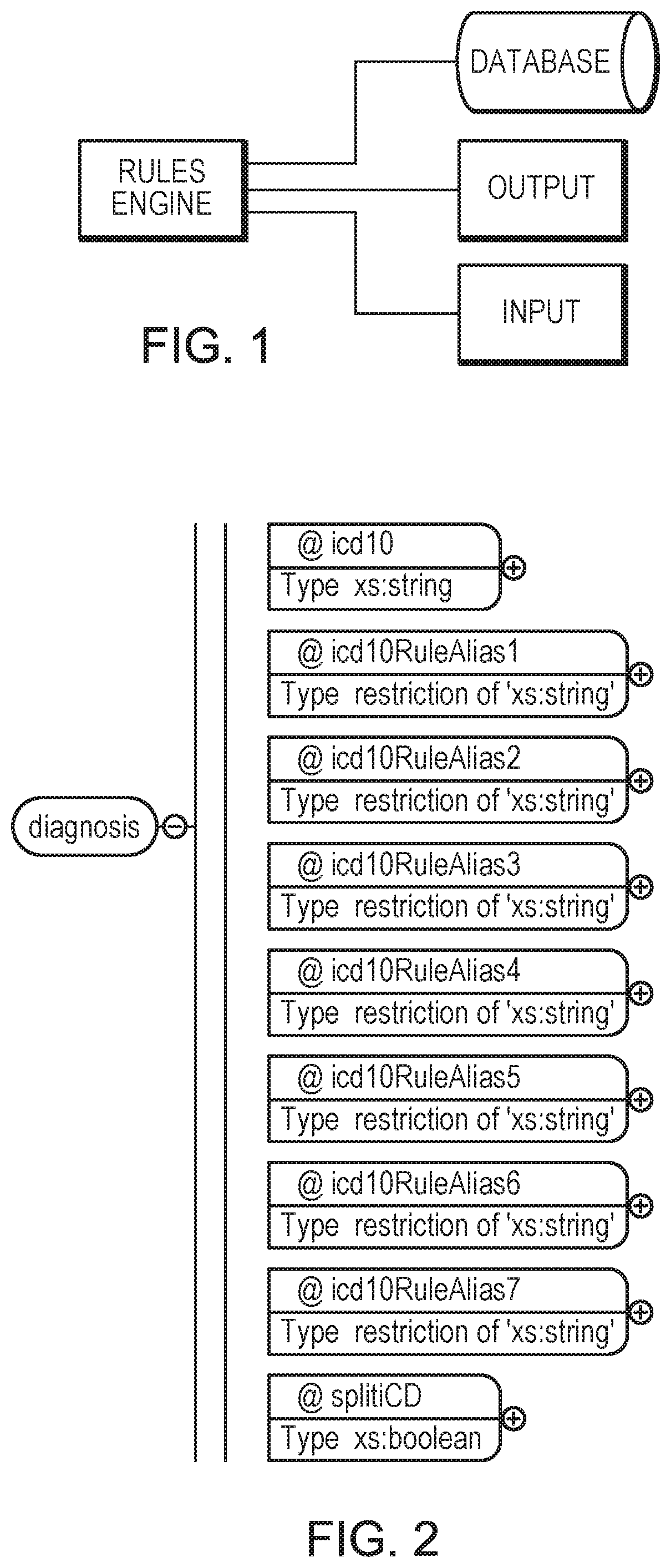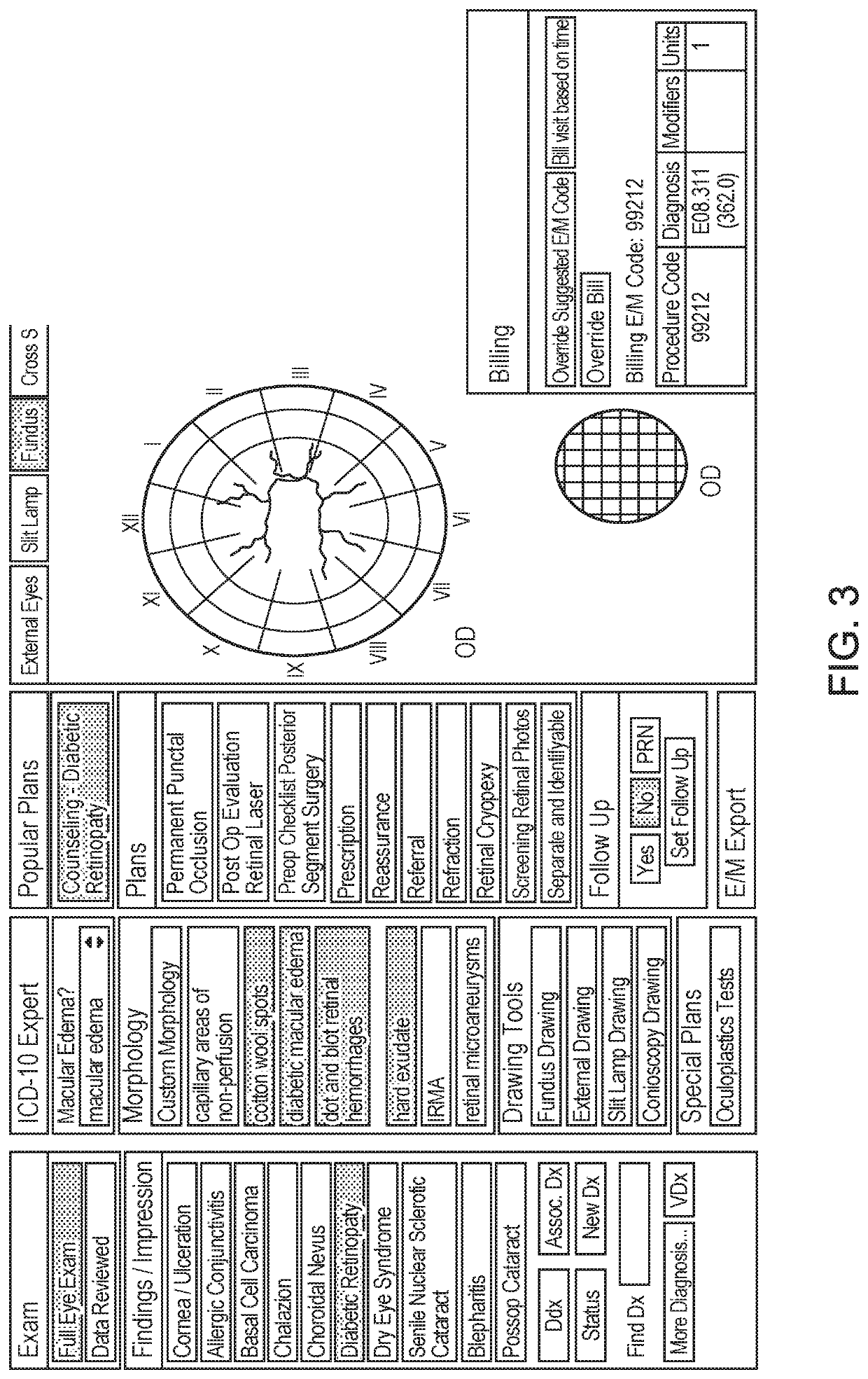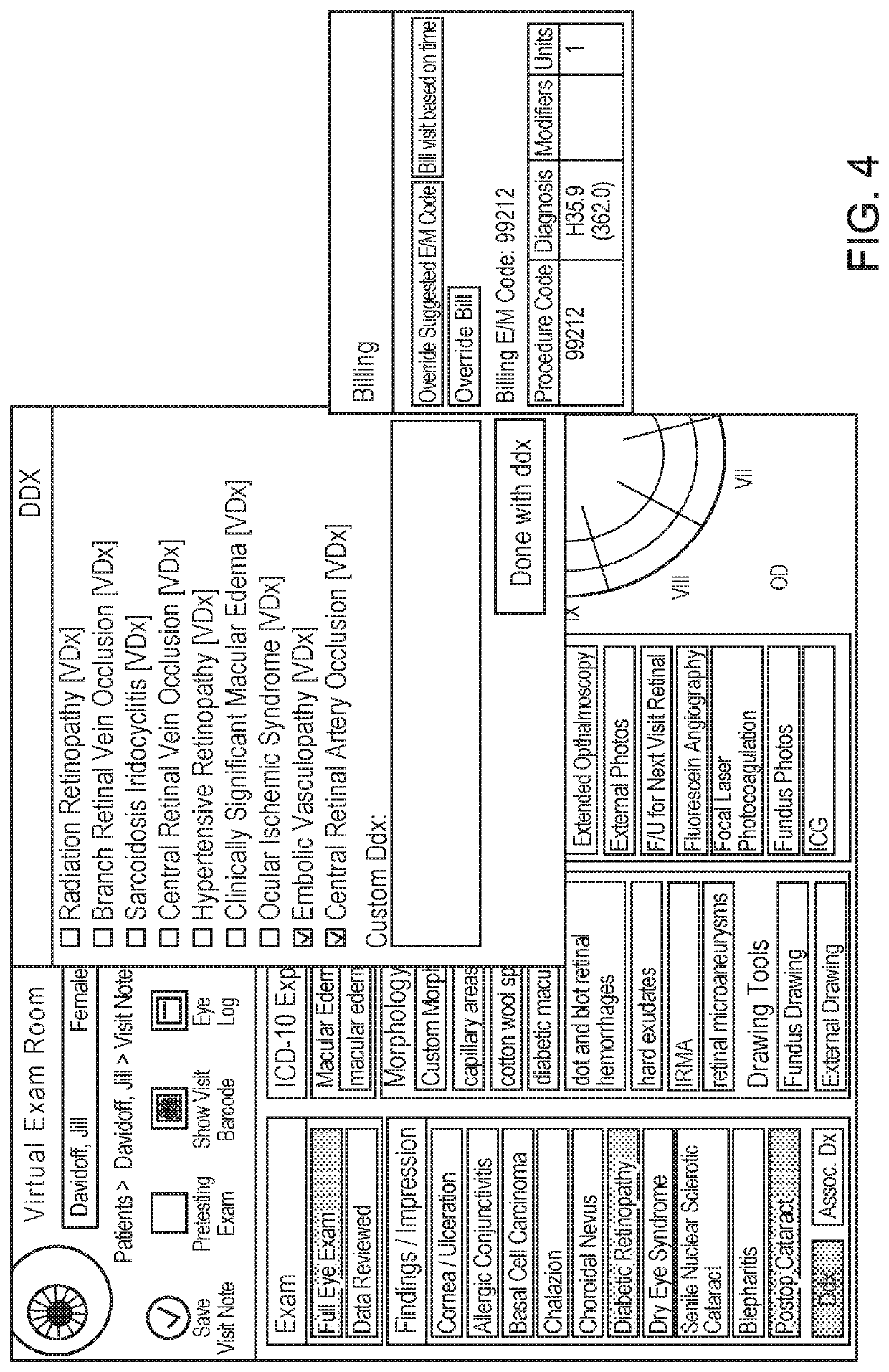Method and system to automate the designation of the international classification of disease codes for a patient
a technology for international classification and disease codes, applied in the field of system and method of automating the designation of international classification of disease codes for patients, can solve problems such as cumbersome use for physicians
- Summary
- Abstract
- Description
- Claims
- Application Information
AI Technical Summary
Benefits of technology
Problems solved by technology
Method used
Image
Examples
Embodiment Construction
[0020]In the present embodiment, as described in an American Medical Association fact sheet, ICD-10 codes range from 3-7 characters in length with many combinations of alphabetic or numeric characters (digit 1 is alphabetic; digits 2 and 3 are numeric; digits 4-7 are alpha or numeric). This means there are over 68,000 available ICD-10 codes instead of 13,000 ICD-9 codes previously available. This increase makes it difficult to memorize the codes or create a document with even the subset of the codes a physician typically uses.
[0021]ICD-10 codes are more complicated because they also factor in laterality along with body location in classifying diagnoses. As a result, instead of just diagnosing someone with folliculitis, a common skin condition, the physician now needs to know which side of the body and what part of the body the folliculitis occurs.
[0022]Additionally, ICD-10, unlike ICD-9, may factor in the severity of a disease, and can have an associated diagnosis that relates to th...
PUM
 Login to View More
Login to View More Abstract
Description
Claims
Application Information
 Login to View More
Login to View More - R&D
- Intellectual Property
- Life Sciences
- Materials
- Tech Scout
- Unparalleled Data Quality
- Higher Quality Content
- 60% Fewer Hallucinations
Browse by: Latest US Patents, China's latest patents, Technical Efficacy Thesaurus, Application Domain, Technology Topic, Popular Technical Reports.
© 2025 PatSnap. All rights reserved.Legal|Privacy policy|Modern Slavery Act Transparency Statement|Sitemap|About US| Contact US: help@patsnap.com



